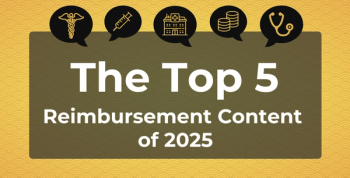
Study Finds Common, Lethal Cancers Need More Funding
Some cancers, such as breast cancer and leukemia, were well-funded compared with their incidence, mortality, and person-years of life lost, while others, such as gastrointestinal and brain cancers, were all poorly funded.
Some of the most common or lethal cancers are underfunded, according to an analysis of nonprofit organization (NPO) funding. The study was
Researchers from Northwestern University found that some cancers, such as breast cancer and leukemia, were well-funded compared with their incidence, mortality, and person-years of life lost (PYLL), while others, such as gastrointestinal and brain cancers, were all poorly funded.
“The goal of this study is not to divert funds away from cancers that are well-supported, but rather expand funding for other cancers that aren’t getting enough support currently,” corresponding author Suneel Kamath, MD, who was the chief fellow in the department of hematology and oncology at Northwestern University Feinberg School of Medicine when he conducted the study,
The researchers analyzed funding from 119 cancer-related NPOs that generated approximately $6 billion in annual revenue in 2015. They compared total revenue from NPOs with cancer type incidence, mortality, and PYLL using scatter plots and Pearson correlation coefficients. They also evaluated the effect of the disease being associated with stigmatized behavior, such as smoking or drinking.
“Shame and discomfort with talking about our bowels and ‘private parts’ may be reducing funding for diseases like colon or endometrial cancer,” Kamath explained.
Breast cancer receives the most research funding ($460 million), followed by leukemia ($201 million), pediatric cancers ($177 million), and lymphoma ($145 million). The cancer receiving the lowest funding were liver and bile duct ($5.8 million), cervical ($5.4 million), endometrial ($5.4 million), and sarcoma ($5.1 million).
The authors noted that there was a weak association between the incidence of a cancer type and funding for NPOs that supported that cancer and there was no correlation between mortality or PYLL and funding. However, energizing and informing the public, through increased spending on fundraising, administrative costs, and patient education, can correlate with increased revenue.
“Well-funded patient advocacy organizations should be applauded for their successes,” said coauthor Sheetal Kircher, MD, assistant professor of hematology and oncology at Feinberg and a Northwestern Medicine oncologist. "We hope to bring awareness to the organizations with less relative funding so we can collaborate to improve funding and outcomes for all patients with cancer."
Reference
Kamath SD, Kircher SM, Benson AB. Comparison of cancer burden and nonprofit organization funding reveals disparities in funding across cancer types. J Natl Compr Canc Netw. 2019;17(7):849-854.
Newsletter
Stay ahead of policy, cost, and value—subscribe to AJMC for expert insights at the intersection of clinical care and health economics.








